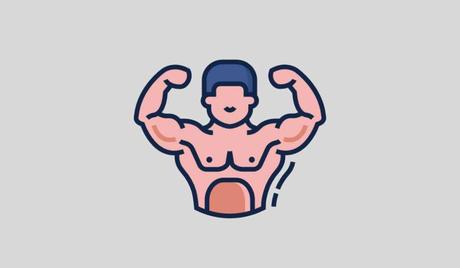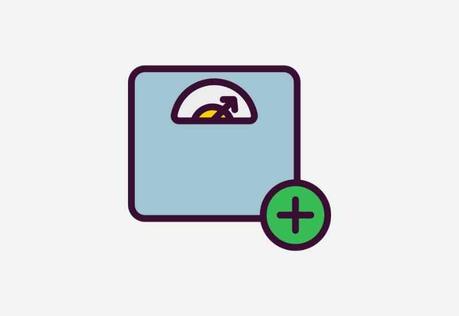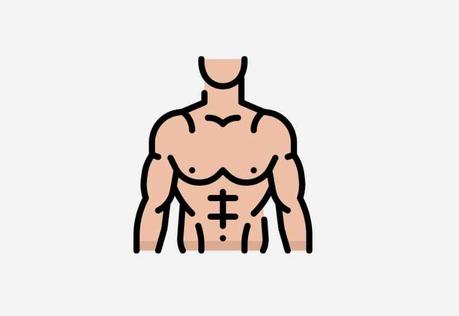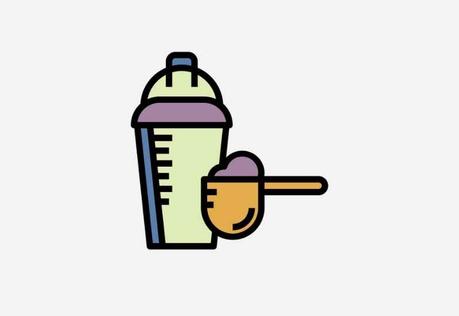Curious about whether you should try bulking and cutting for muscle gain? Here is a detailed comparison between the two, including pros, cons, and how to start both properly and effectively.

Lifters and athletes are always on the hunt for stronger, larger muscles.
One of the tools commonly used to achieve the goal of more muscle mass is bulking and cutting.
A two-phase approach, this strategy pairs intentionally gaining weight via a caloric surplus (bulking) with a targeted caloric deficit (cutting) to shed accumulated fat while retaining new muscle.
In the end, you gain some sweet new muscle without the added fat and bloat.
In this guide to bulking vs. cutting, we will look at the pros and cons of each, and some best practices for doing them both correctly.
Onward!
Bulking – An Overview
Bulking is the process of ingesting excess calories for a determined period of time in order to build muscle mass.
By eating a surplus of calories, the body has a nice and healthy reservoir of calories to gain muscle and strength while you are training.
While bulking can easily be used as an excess to reach for that third, fourth, and fifth slice of pizza, when done properly, it can lay the ground for building more muscle mass.

You’ll notice that your abs may start to fade into the background a little bit, and some soft spots will start popping up during this phase.
It’s almost impossible to bulk solely muscle when in a caloric surplus. (More on that later.)
Bulking isn’t a requirement for building muscle—there is some research1 that has shown you can build muscle size while in a caloric deficit, too—but it’s a popular way of ensuring the body has everything it needs to gain strength and size.
Pros of bulking:
- Get to eat more yum-yums!
- Surplus of energy usually means better workouts
- You will recover more efficiently after big workouts
- Increased strength
Cons:
- Can lead to unintended (i.e. surplus) weight gain
- Uneven energy levels if not balancing macros
- Leads to “softening” appearance of existing muscles
- Added weight slows us down on the court/field
Cutting – An Overview
Cutting is when you enter a caloric deficit in order to shed fat stores and water weight while holding onto all of that sweet, sweet new muscle you’ve built in the bulking phase.
When you cut varies; bodybuilders and physique competitors will do so in the days and weeks leading up to shows.
Even athletes do a cutting phase of sorts before competitions—although this is mainly a calorie reduction as they enter a taper phase (which requires less overall energy and caloric intake to sustain training).

Pros of cutting:
- Leaning out makes you feel more agile and quick
- Muscles come into focus again; enhanced muscle definition
- Increased performance in the weight room and playing field
- Fat loss 9000
Cons of cutting:
- Can feel sluggish for a bit
- Less energy during workouts
- Moodiness from reduced calories
- Can impair sleep, hormones and metabolism2
Bulking – How to Get Started
Of the two, bulking is a little more fun.
You get to crank up the food intake, after all. Here are some simple tips for getting started with a proper bulking phase:
 Aim for 10-20% more calories
Aim for 10-20% more calories

Bulking sounds fun in theory—stuff your face until your pants crack and the button from your fly sails across the room at light speed.
But like any kind of strategic eating, you gotta be, you know, strategic.
Sit down and figure out what your daily caloric maintenance number is. And then add around 10-20% of that and you are in bulk mode.
Don’t eat blindly to the point of feeling extra full (and borderline in pain) with each meal. Aim to get around 10-20% more calories than usual3 and you will pack on an optimal amount of weight for mass.
 Eat more often
Eat more often

Simply eating bigger meals seems like the obvious way to go about bulking and hitting those target calorie numbers.
But feeling perpetually full all the time kind of sucks, and frankly, it’s a bit rough on the digestive system.
Instead, add a couple of small meals to your day.
Eat your main meals according to schedule and portions, but add a second mini breakfast and a second mini lunch to your eating schedule.
For people who struggle to eat more than their maintenance numbers, you can use supplements (protein shakes are a no brainer), more liquids, and calorically dense foods (almonds, seeds, etc.) to get the right number of calories and macros without feeling perennially stuff.
 High protein intake
High protein intake

The goal is building muscle with a bulk!
So make sure you are getting enough protein to sustain protein synthesis.
You should be aiming to get at least 1g of protein per pound.

Protein helps your muscle recover and grow, so make sure you are getting adequate protein via food and your protein shakes.
Additionally, lifters tend to load up on more carbs during the bulk, neglecting good fats and protein, so make sure that your added calories are balanced4.
 It’s bulking season, not bulking year
It’s bulking season, not bulking year

Bulking for too long just leaves you with an ever-burgeoning waistline and makes the cutting phase more challenging.
Plan your bulking phase to last between one to two months, although there are hard-gainers who might need to extend that timeline.
Bulking works in conjunction with cutting, so try not to overdo it on the phase that is more enjoyable.
 Supplement like a champion
Supplement like a champion

We mentioned protein earlier, and we are going to bang on that drum again here. Supplements are a killer way to get “easy” calories by drinking them.
There are plenty of supplements that can help you during this phase, including whey protein, casein, creatine, caffeine, and there are even bulking stacks (CrazyBulk’s Bulking Stack is my favorite) to take some of the guesswork out of supplementing properly.
Lifters should aim for a weight gain of around 0.25 to 0.50% of their bodyweight on a weekly basis when bulking. So, if you weigh 200lbs, adding no more than 5-10lbs per week is the goal5.
Cutting – How to Get Started
As you can guess from the name, cutting is where we sharpen our physique, reducing the number of calories we ingest and reveal those shiny new muscles.
Cutting is the inverse of bulking when it comes to calorie intake (booo!).
Here’s how to start a cutting phase like a champion:
 Establish your maintenance calorie count.
Establish your maintenance calorie count.

Remember during the bulking phase when you pieced together your daily maintenance calories?
Ultimately, the amount of calories you need to function optimally on a daily basis comes down to your sex, activity levels, age, and whether you put your dishes away after eating dinner.
(Kidding.)
We are going to do that again, and this time subtract around 500 calories per day.
Why 500?
A pound of pure fat has approximately 3,500 kcals6.
A 500-calorie deficit each day will yield a loss of one pound of fat per week.
 Maintain protein levels
Maintain protein levels

Protein is the lifeblood of big muscles, so cutting them at this stage would be plain silly!
Keep ingesting lots of protein, at least 1g per pound of your bodyweight.
It’s almost impossible to eat too much protein (although I’m sure if you really tried, you could), with research showing that well-trained people ingesting over 3g per kg of bodyweight per day promote accelerated fat loss7.
Also, to maximize effect and digestion, spread the protein intake out across your day. Aim for 20-40g every 3-4 hours.
Studies have shown that spreading out protein intake can increase the rate of protein synthesis8.
 Schedule the cutting phase
Schedule the cutting phase

Cutting phases tend to be shorter than the bulking phase.
Generally no longer than 1-2 months.
Even though cutting is awesome in the sense that you are shedding fat the way Beau, my golden retriever, sheds golden locks of hair all over the house, there are some not-so-awesome things that can happen during extended cutting.
Common things include impaired sleep and hormonal imbalances9.
Aim for a loss of body weight ranging in 0.5 to 1% on a weekly basis. This will ensure that you are primarily burning fat and not atrophying those hard-earned muscle fibers10. So, for a 200lb person, you would be aiming for a weekly drop in weight of 1-2lbs.
Can you bulk and cut at the same time?
Can you jump and sit down at the same time?
Well, maybe there are some well-trained people who can do this, but they are rare.
Cutting and bulking simultaneously, or “body recomposition,” is most common in untrained and/or overweight individuals because of the novelty of resistance training giving them a double-whammy effect of fat loss and muscle building11.
Well-trained individuals will have difficulty doing this (unless they have assistance in the form of anabolic-androgenic steroids), but it’s not impossible.
The Bottom Line
No matter what your goals are in the gym, whether you are a high-performance athlete, a physique competitor, or you simply want to pack on some muscle, bulking and cutting are tools you should add to your toolbox.
There are some fairly obvious pitfalls with this kind of dieting—eating too much or too little can lead to underwhelming workouts, leave you feeling crabby, and lead to unintended weight gain.
Do some planning and prepping, go in with your caloric targets, don’t forget to stay on top of your protein intake, and you will be on your way to larger, stronger muscles.
